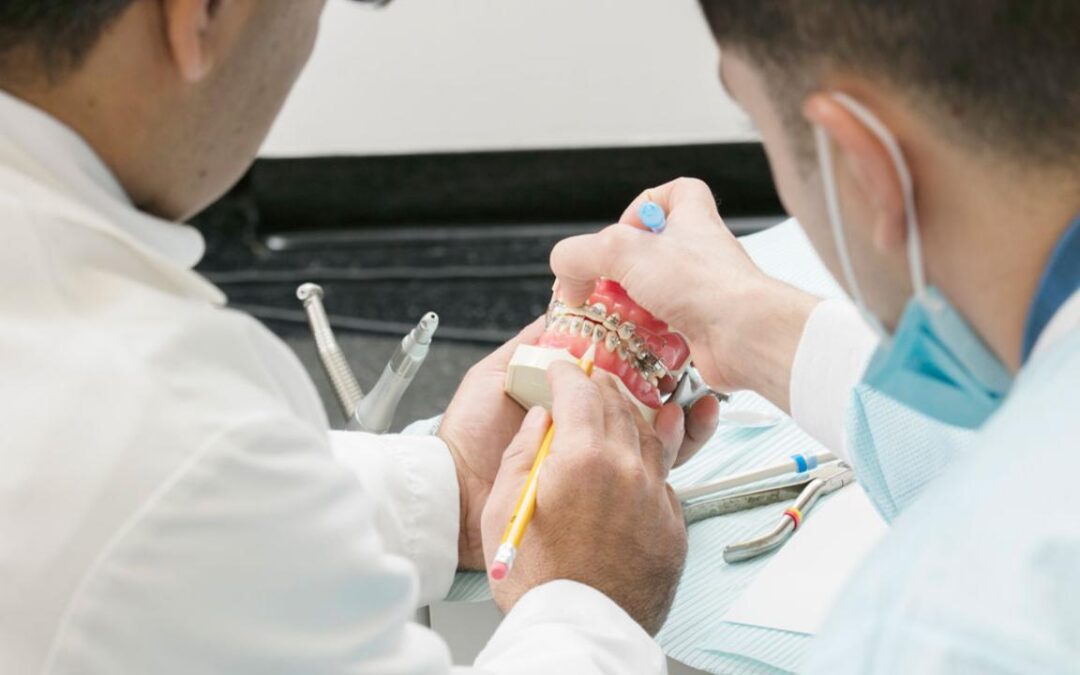What is the difference between a dentist and an orthodontist? To answer a question that is often asked, both dentists and orthodontists help patients obtain better oral health, albeit in different ways. It helps to remember that dentistry is a rather broad science with different medical specializations. All dentists, including orthodontists, treat the teeth, gums, jaw and nerves.
So, what is an orthodontist and how different are they from dentists? What conditions do they treat, and what are the things that they can do? We’ll answer these questions below.
What Is The Difference Between A Dentist And An Orthodontist?
Orthodontists and dentists both provide dental care for patients. Orthodontists can work in a dental office and offer the same treatments as other dentists. So you can think of both doctors who treat gum and teeth problems.
The main difference is that becoming an orthodontist requires a particular specialty in treating the misalignment of the teeth and jaw. A general dentist who studies further to focus on orthodontic care is called an orthodontist.
What Is an Orthodontist?
An orthodontist is a dentist that has undergone training to specialize in the diagnosis, prevention and treatment of irregularities in the jaw and teeth. Their training includes correcting these existing conditions. They can also identify potential problems in teeth alignment that may develop when conditions are left untreated. Orthodontists can assist people of all ages.
What Education Is Needed To Become An Orthodontist?
Becoming an orthodontist requires approximately 12 years of training in a formal university. This includes all the necessary education to become a general dentist. According to the American Student Dental Association (ASDA), it means you will need to have either a Doctor of Medicine in Dentistry (DMD) or a Doctor of Dental Surgery (DDS).
In other words, orthodontists need to complete dental school and then obtain an orthodontics specialty education. Orthodontists can also gain a certificate of orthodontics through residency, which can take up to three years. Some orthodontists also get their masters in craniofacial biology.
Many dental schools provide limited orthopedic training and instruction, which is why general dentists need to go to orthodontic school after graduation. Orthodontic residency programs offer intensive training for this type of dental specialization. These programs focus on two specific areas or disciplines:
- Dentofacial Orthopedics: This study focuses on guiding teeth and jaw development.
- Orthodontics: This study focuses on how one can safely and effectively move teeth into their proper place.
Once you have completed your orthodontic training, you have the option to obtain board certification.
What Does An Orthodontist Do?
Orthodontists work on a specific set of dental problems, meaning they treat misalignments in the teeth and other related irregularities. Some of the conditions that they treat include the following:
- Jaw misalignment
- Teeth that are too far apart
- Crowded teeth
- Overbites
- Underbites
- Crooked teeth
As you can see, these are specific types of dental conditions other than the usual problems general dentists deal with. Orthodontists will also use specialized methods to change and adjust the position of the teeth. These include apparatus such as braces, retainers and Invisalign.
So, what does an orthodontist do, and what do they focus on? The overall goal of an orthodontist is to improve a patient’s bite. Not everyone is born with straight teeth, and an orthodontist will ensure that patients get evenly spaced straight teeth. In addition, the upper teeth must align with the opposing teeth along the jaw.
When you have a healthy bite, you can speak, chew and eat properly, thus improving your quality of life.
What Is An Orthodontist Assistant Called?
Other than the orthodontist, we often see assistants working with these dental professionals in their clinics. So, what is an orthodontist assistant called? They’re appropriately known as orthodontic assistants. They are specialized aides, and are trained to handle dental gear and provide preventative dental healthcare. Orthodontic assistants can place wires into braces, take x-rays and photos, impressions and digital scans to help the orthodontist with treatment.
When To See An Orthodontist
The American Association of Orthodontists recommends your first check up by age 7. You’ll need to see your orthodontist if you have a misalignment in your teeth, also known as malocclusion. Also, if you notice irregular bite patterns, a slightly misshapen jaw, or when your teeth are overcrowded, you will likely need orthodontic treatment.
Orthodontists specialize in the treatment of various conditions and will perform any of the following procedures:
- Oral exams
- Dental x-rays
- Digital scans of your teeth
Expert Orthodontic Care At Advanced Orthodontics
Expert orthodontic care not only treats irregularities, but also helps to improve your smile and provides you with an overall better quality of life. To find an Orthodontist near you, please visit our website: https://caortho.org/locations?zip=92374&d=5
Source: https://aosmiles.com/what-is-an-orthodontist-and-what-do-they-treat/

